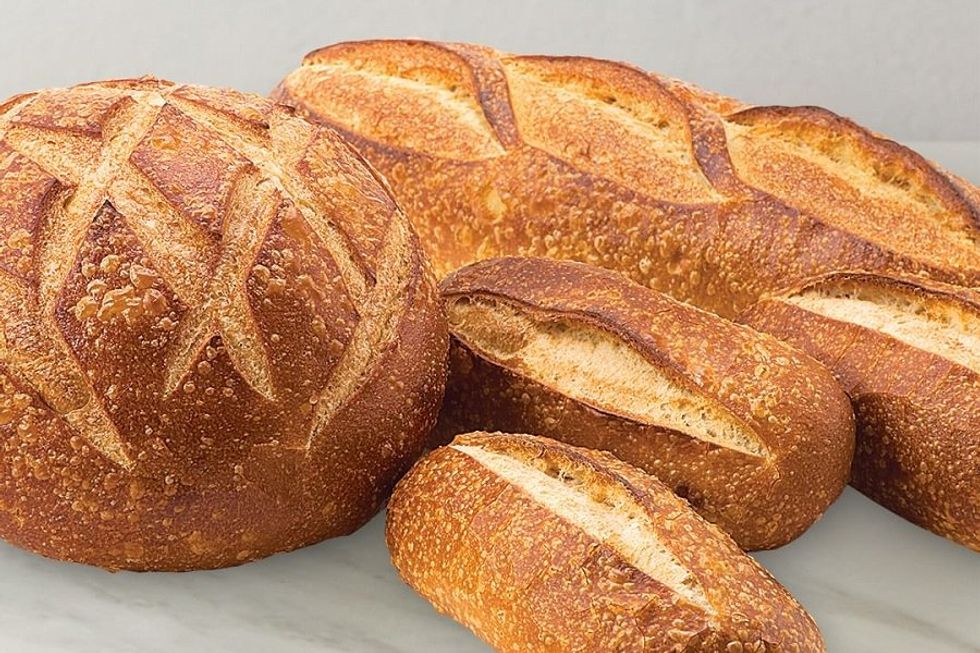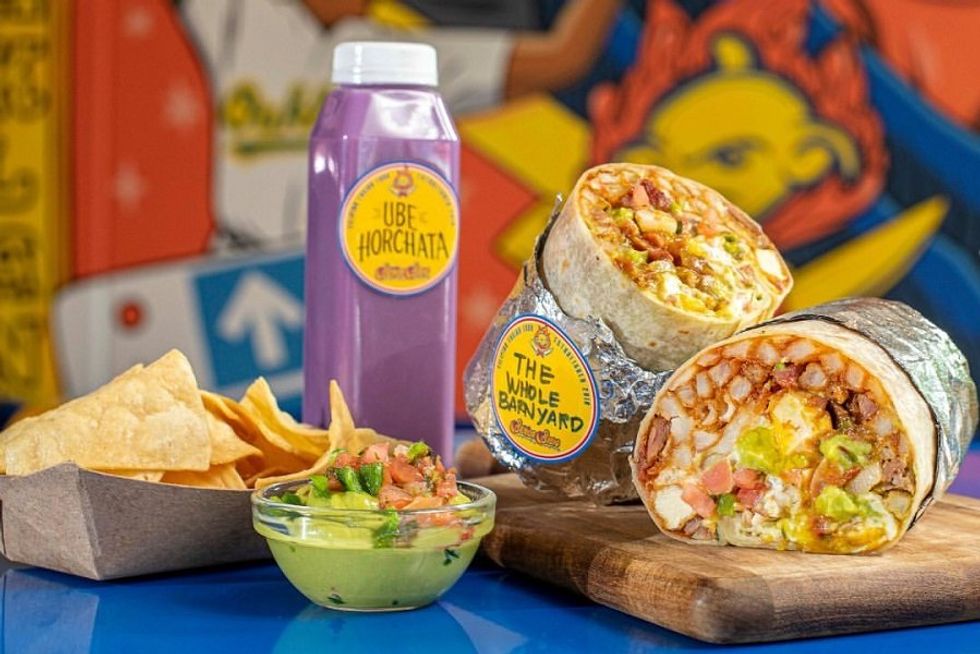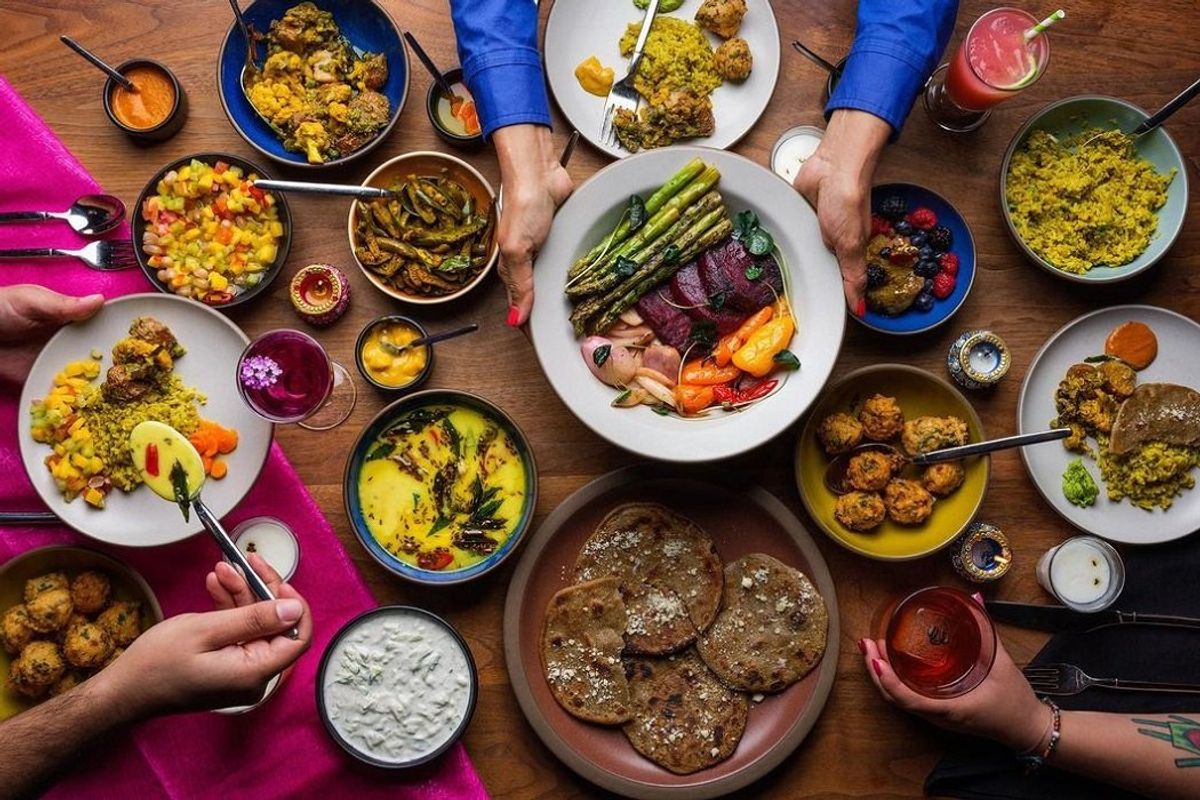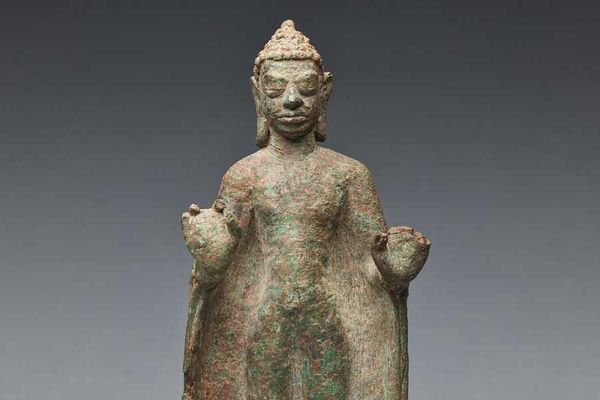Since the arrival of San Francisco’s first settlers, the city has been a place of cultural confrontation, exchange, and rebirth.
“People from all over the world brought their different culinary traditions, but also ingredients that few other places had access to. So, there’s a spirit of diversity and adventurous eating here from the start,” says Gabrielle Santas, research director for the California Migration Museum.
In June, the California Migration Museum—a uniquely non-traditional institution that operates through immersive experiences and exhibits instead of from a brick-and-mortar gallery—debuted a new project tracing the movement of SF’s immigrants and refugees through the food they’ve left behind. The stories of 38 restaurants, chefs, and dishes are collected in Melting Spots, an interactive map of the city’s culinary heritage (an illustrated print edition is also available).
“This wasn’t about trying to create an exhaustive list of every immigrant kitchen in San Francisco—which would be a gargantuan and almost impossible task,” says Santas. The point was “to highlight stories that explain why San Francisco food is unique, and how the city’s food culture has evolved to what it is today.”
A number of the sites highlighted have either originated or perfected a quintessentially San Franciscan dish, and "bite-sized” audio stories reveal the little-known memories belonging to each.
At Thanh Long (#1, 4101 Judah St.) in the Outer Sunset, the granddaughter of the inventor of garlic noodles remembers how her grandmother, Diana An, turned a small Italian deli into her ticket out of war-torn Vietnam in the 1970s. At El Faro (#22, 82 1st St.), legendary Mission burrito creator Raymunda Ramirez and her daughter talk about why the hand-held food was such a success in a city constantly on the go. At Boudin Bakery (#32, Pier 39), the former owner describes how SF’s foggy microclimate played an essential role in the creation of sourdough bread in 1849.

To represent cioppino, CalMigration looked to the chef-owner of Anchor Oyster Bar (#9, 579 Castro St., Castro), Roseann Grimm. “There are probably hundreds of places that serve cioppino in San Francisco but we chose Anchor Oyster Bar because Roseann not only makes an excellent version of that dish, but her grandfather was one of the Italian fisherman that arrived here from Amalfi, so she could speak personally to that migration story, as well,” says Santas.
CalMigrations worked with La Cocina—the incubator for women, immigrant, and POC food entrepreneurship—to identify more recent stories and culinary contributions.
Of Besharam [#38, 1275 Minnesota St.], she said chef Heena Patel’s "story is really a testament to how difficult it can be to start somewhere new with the label of ‘immigrant.’ and how cooking can often be a lifeline in that experience.“
Reem’s California [#21, 2901 Mission St.] is another important spot on the map. “Reem Assil is a former labor-organizer turned baker, and her interview really gives her workers their flowers," says Santas.
While some Melting Spots celebrate the authentic flavors of homeland and heritage, others are recognized for their ability to fuse distant food traditions with Californian ones. At Señor Sisig (#17, 990 Valencia St.), for example, co-founder Evan Kidera explains how the juggernaut began combining classic Filipino dishes with Mexican-American cuisine out of a food truck in 2010.

Through the stories collected on the Melting Spots map, a clear picture emerges of SF as a beacon of sanctuary and hope for people around the world. The foods and restaurants we cherish—and the culinary creations yet to come—are a complex product of more than 175 years of crossing paths.
“The whole project also feels like our love letter to San Francisco—especially in time when visitors and locals alike are hearing so much about the “doom loop,” and the ghost-town downtown,” Santas says.
She hopes the Melting Spots map, as well as upcoming collaborations with its chefs and businesses, and a podcast mini-series in the fall, will help to “remind people why the city is special.”
// The interactive Melting Spots web map is at meltingspots.calmigration.org. Limited edition illustrated print maps are available at flipcause.com.





















